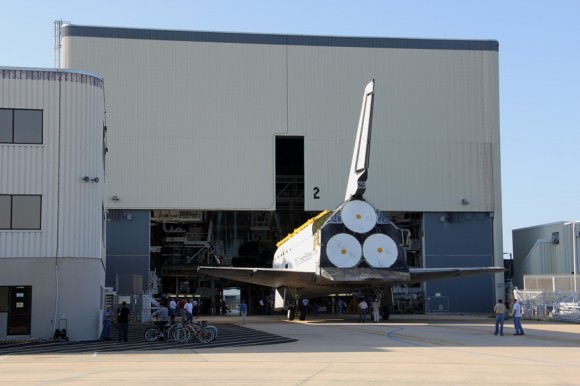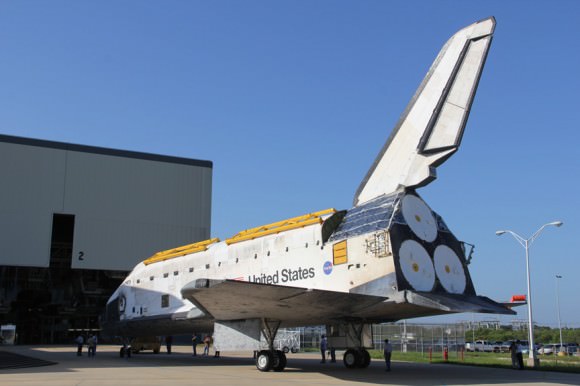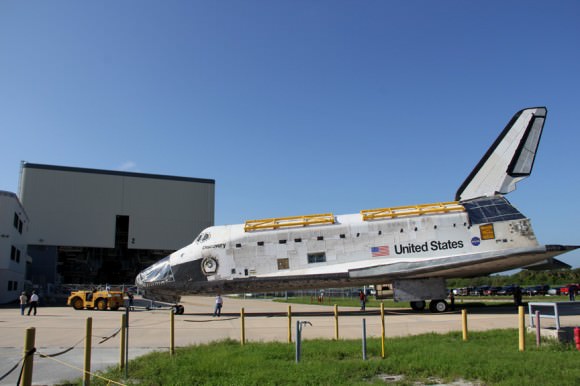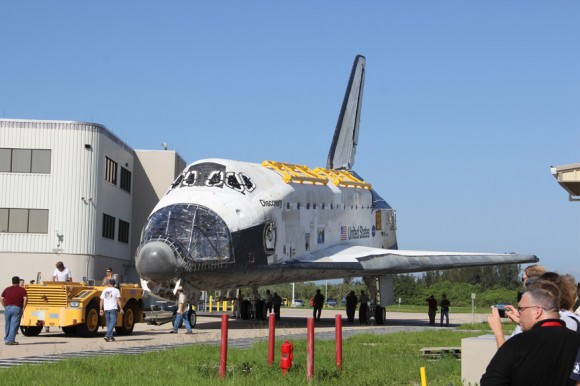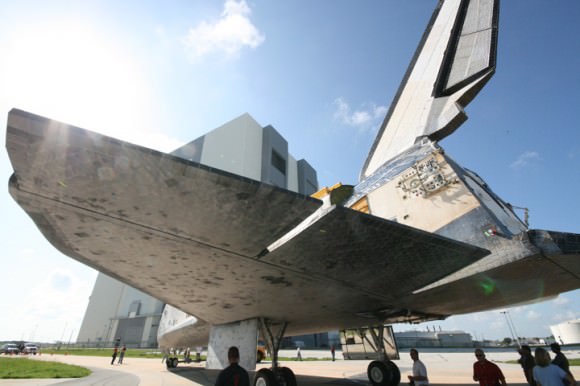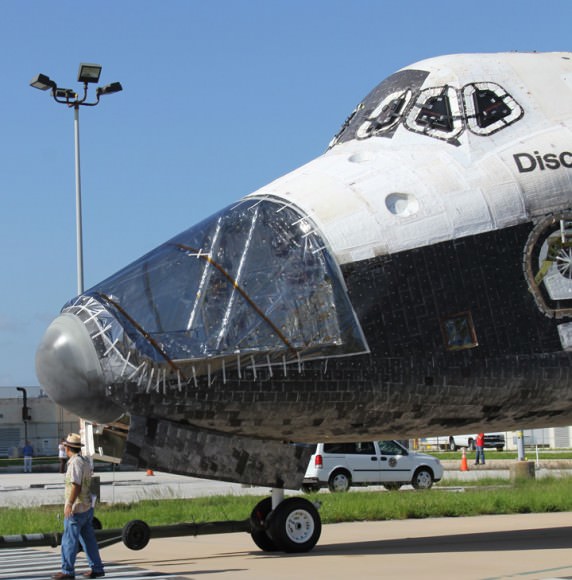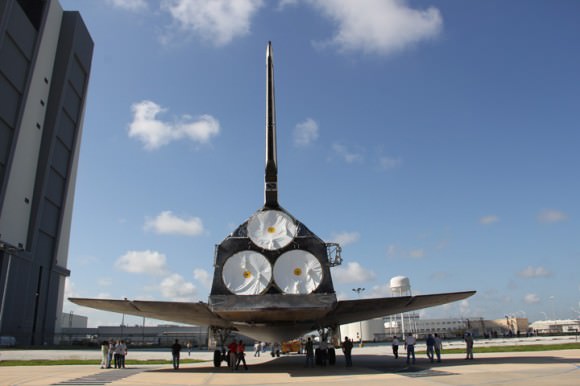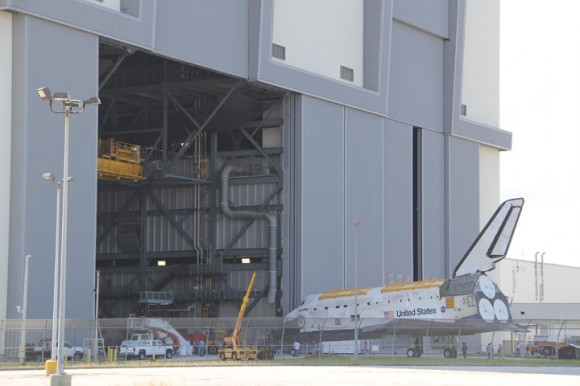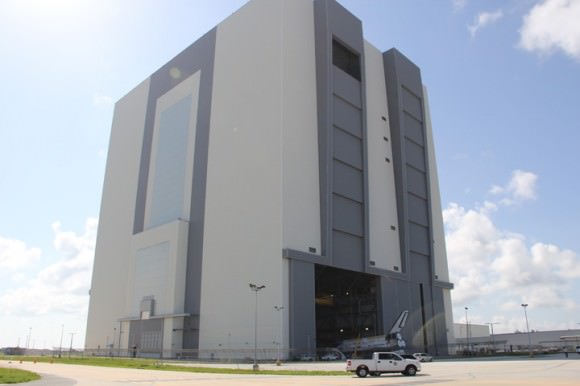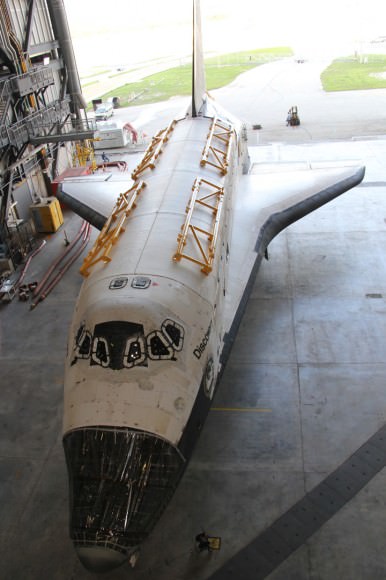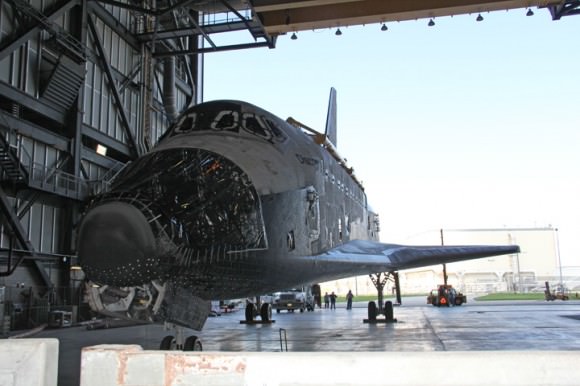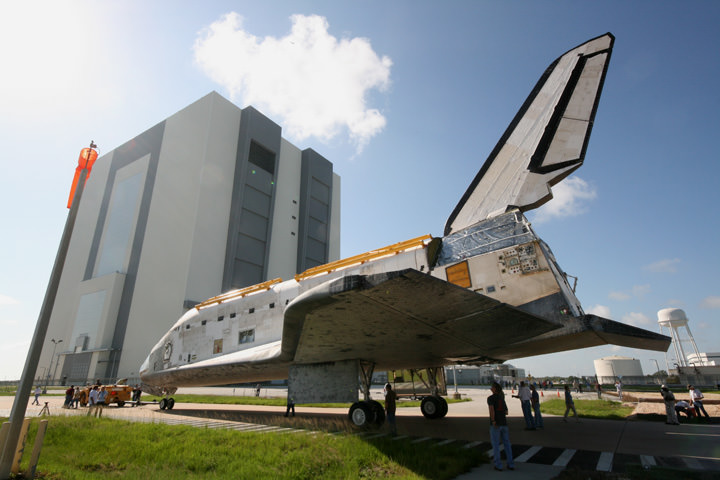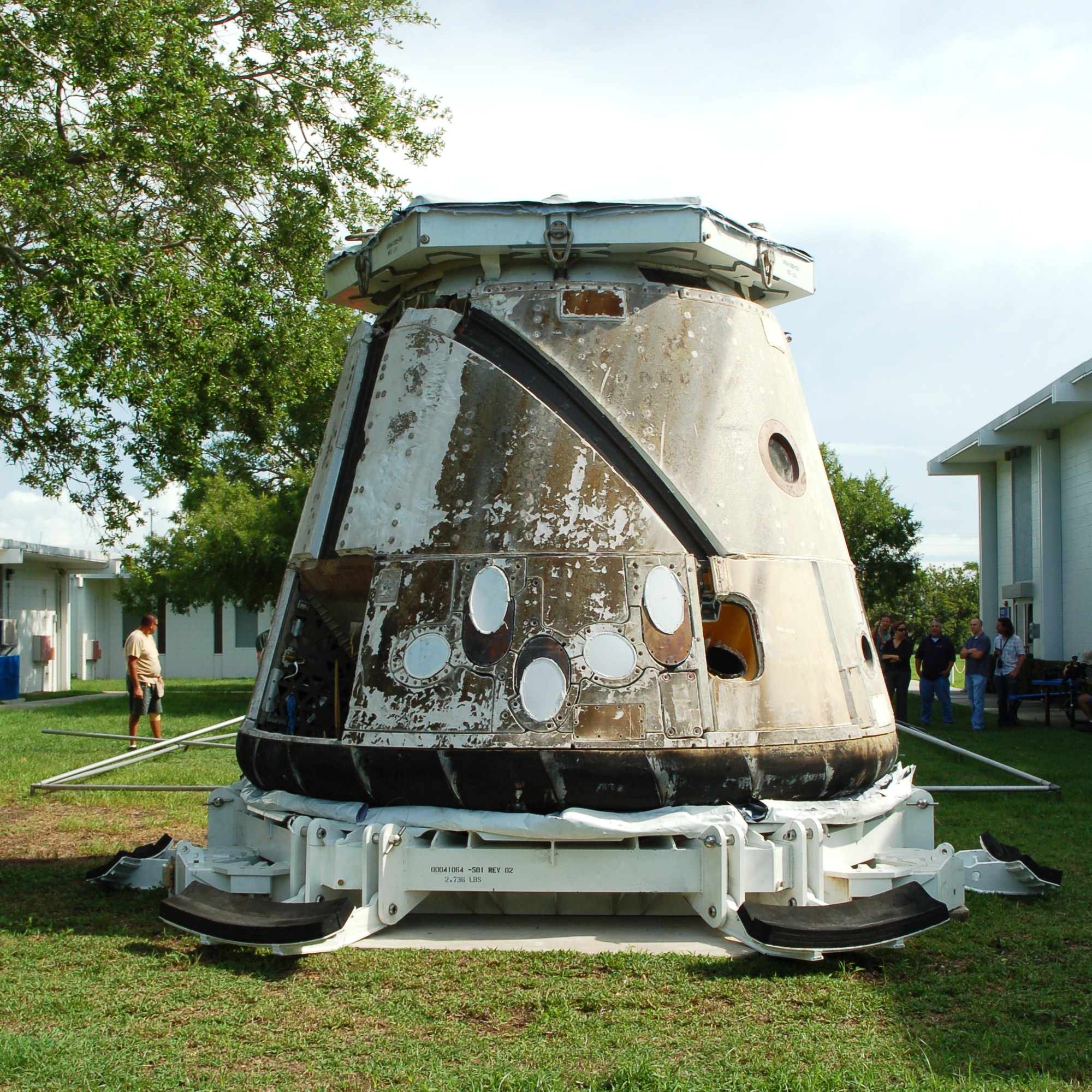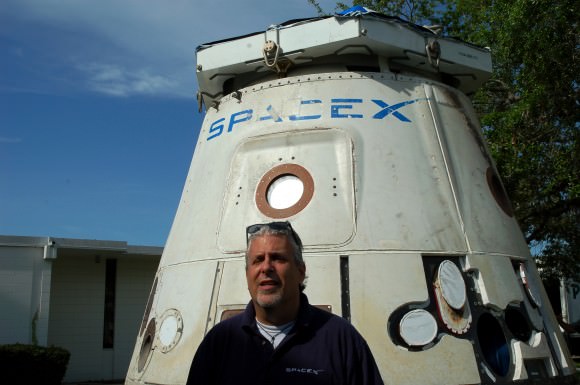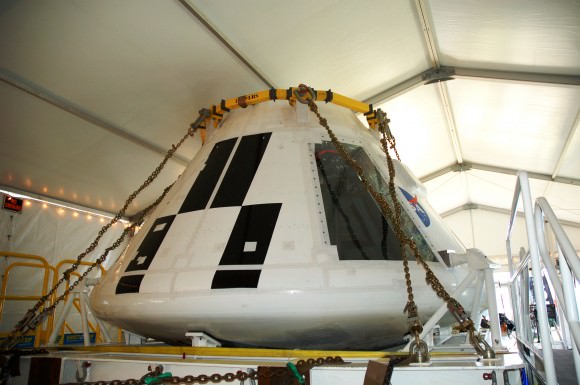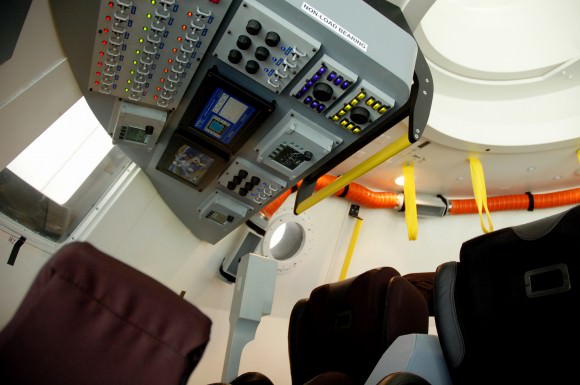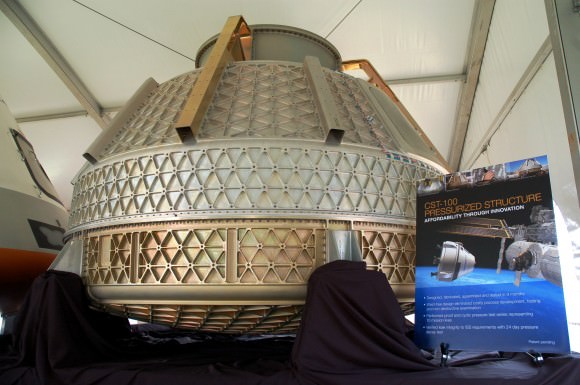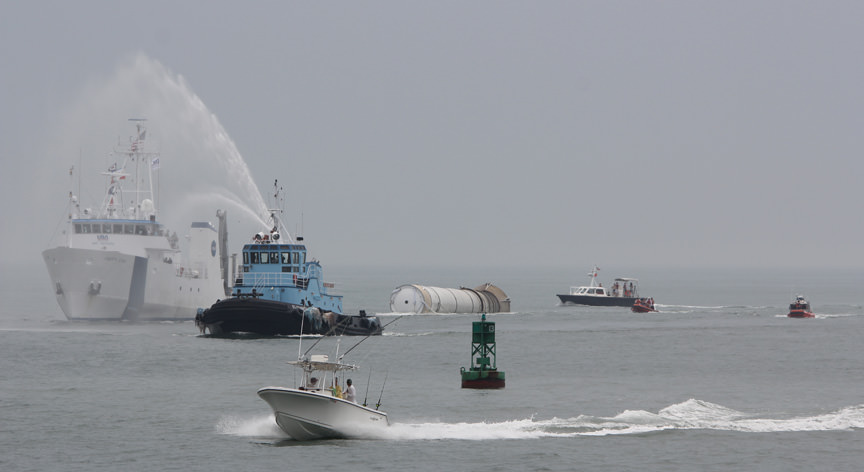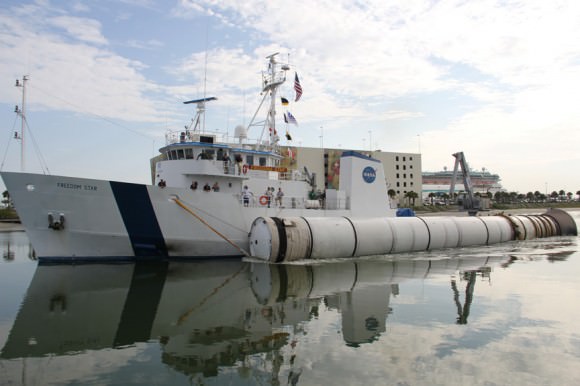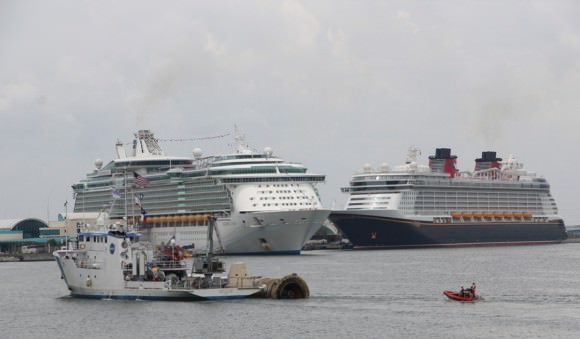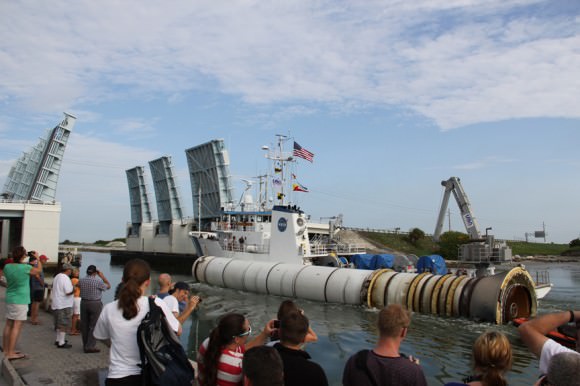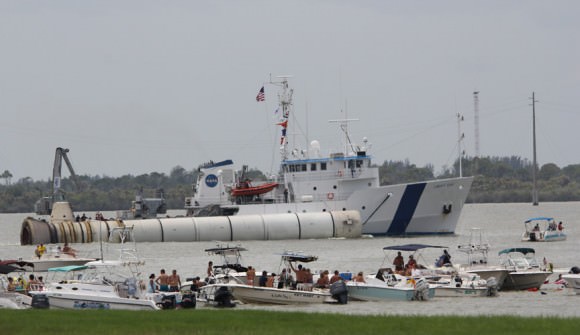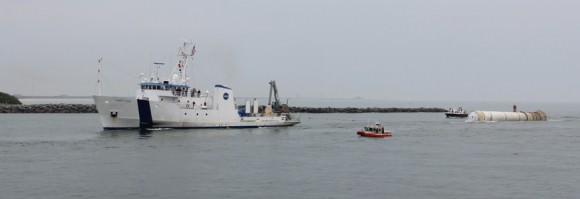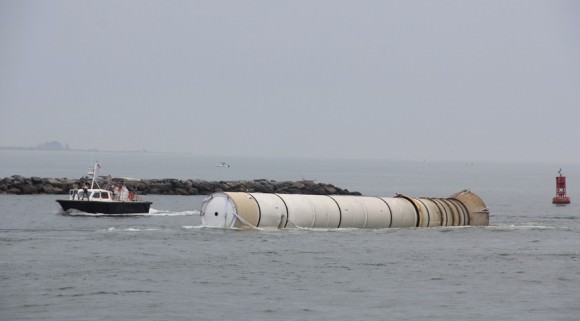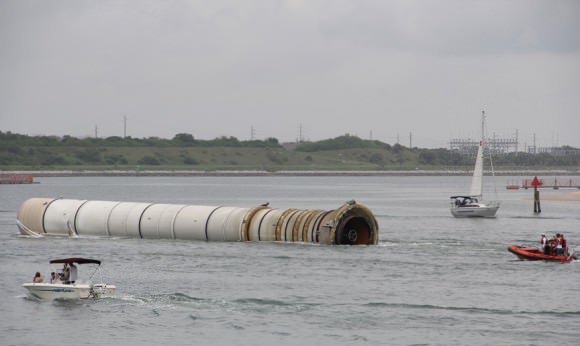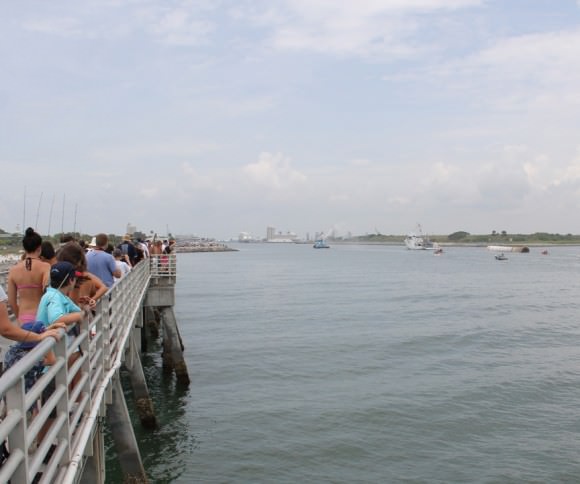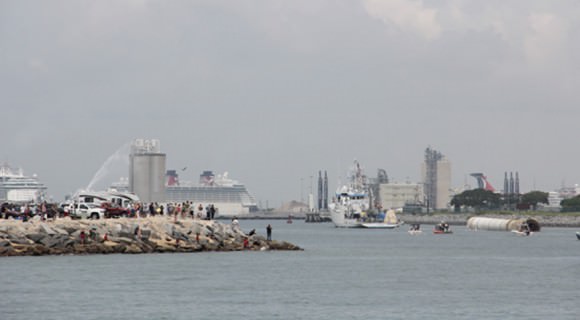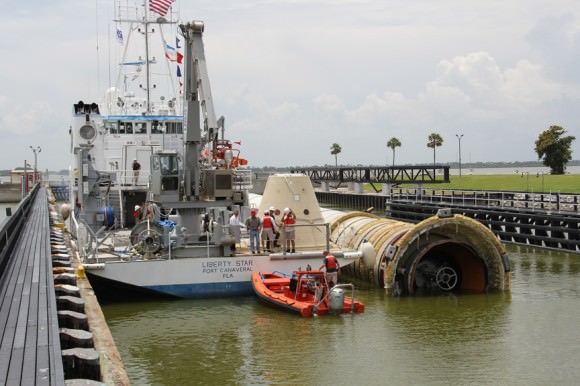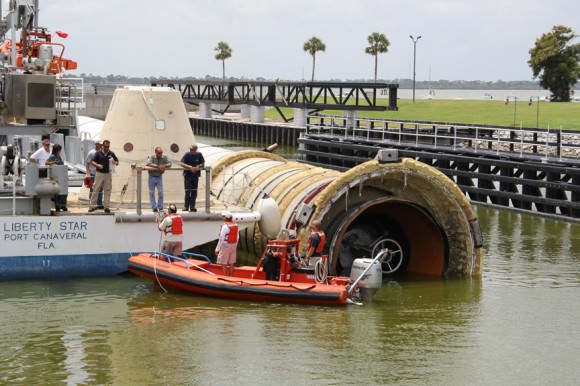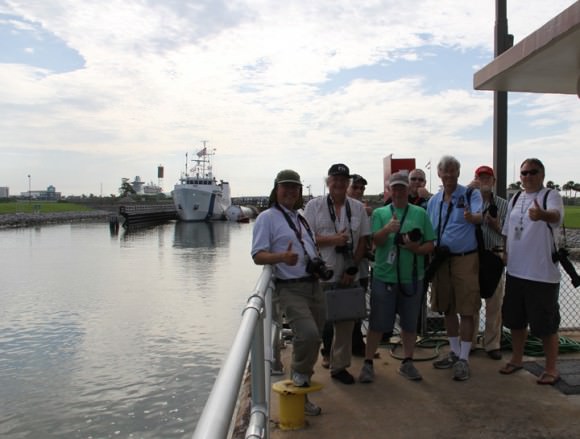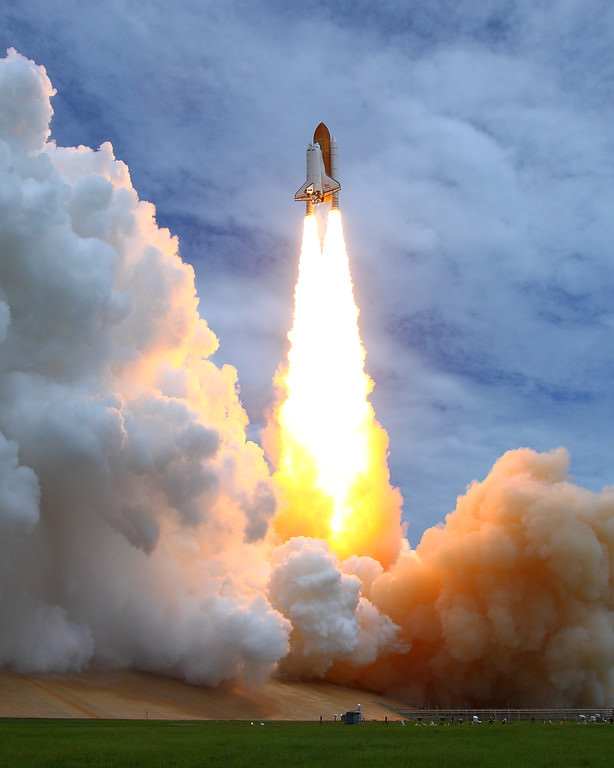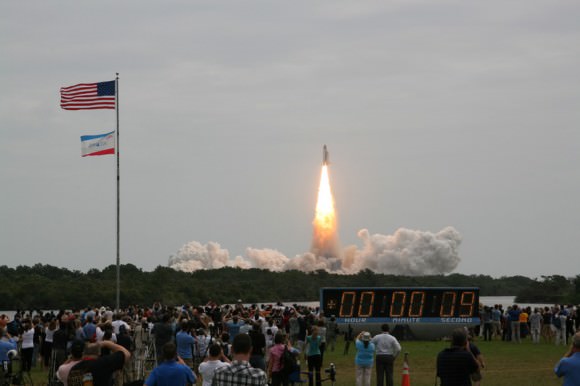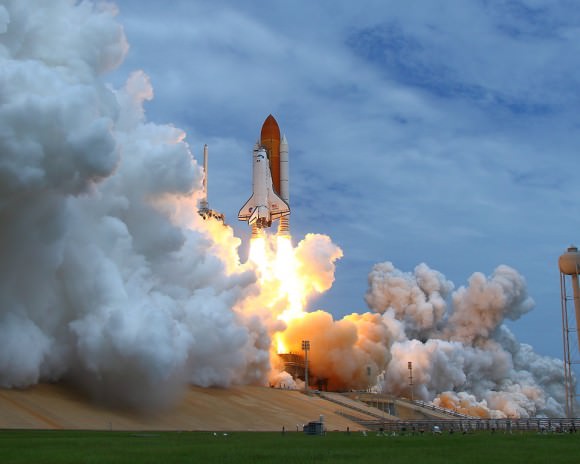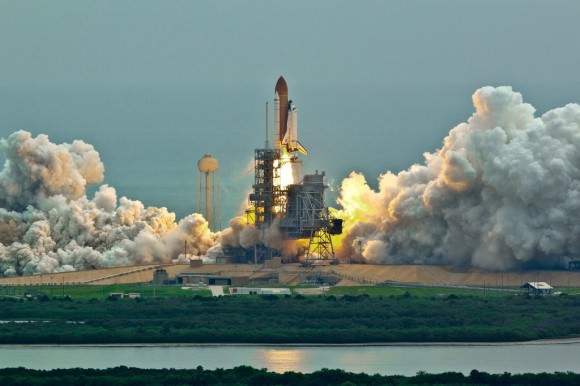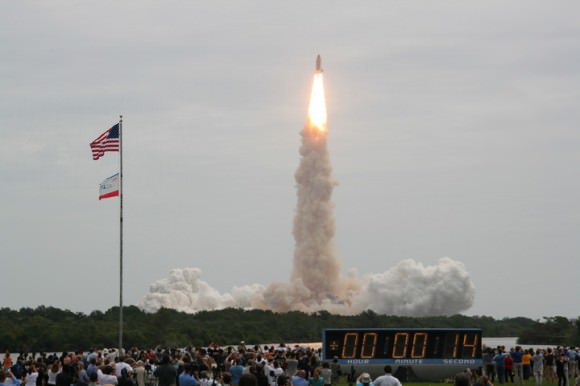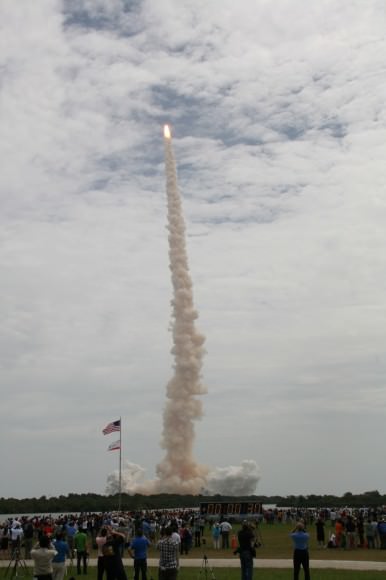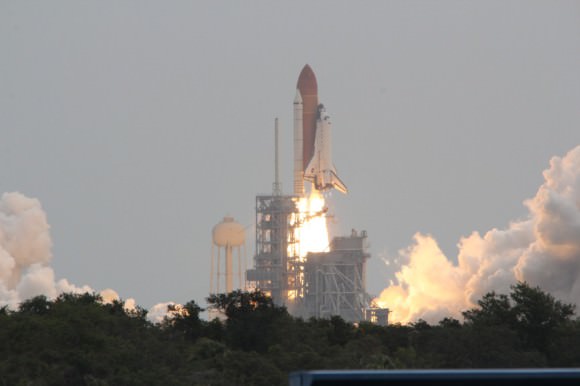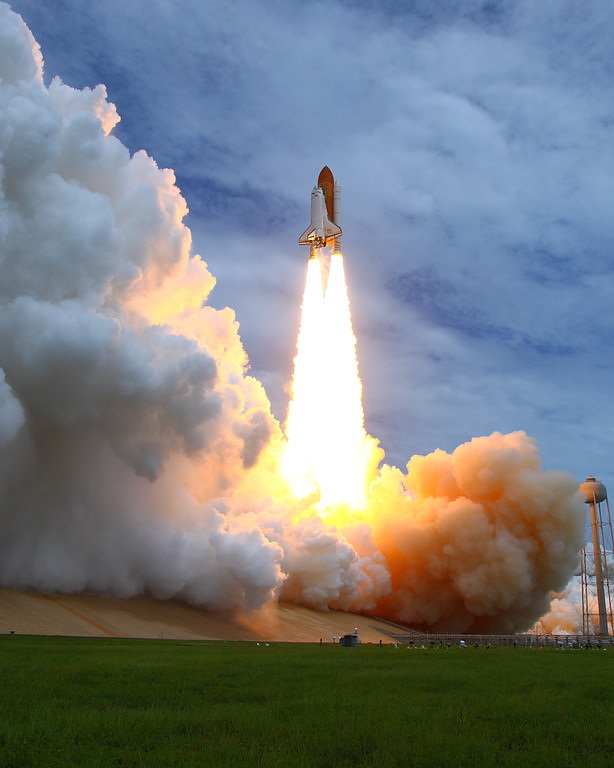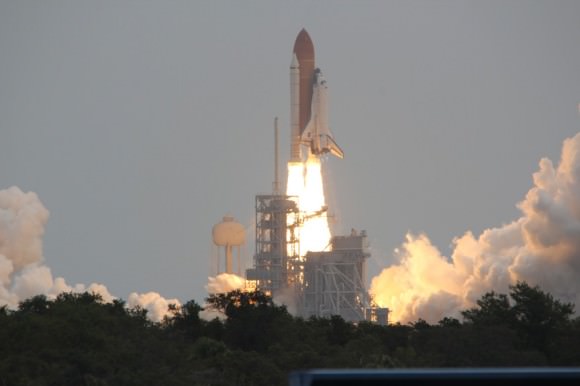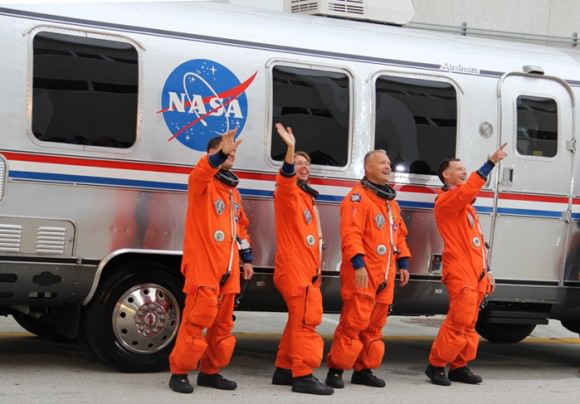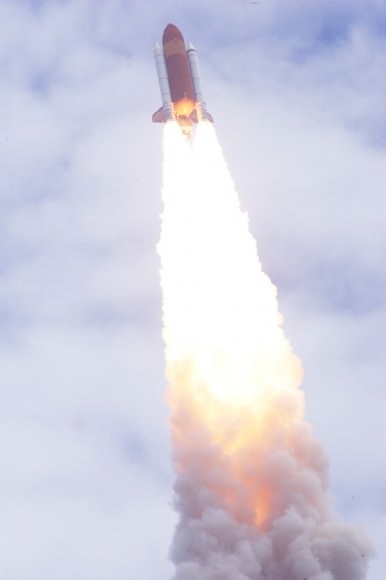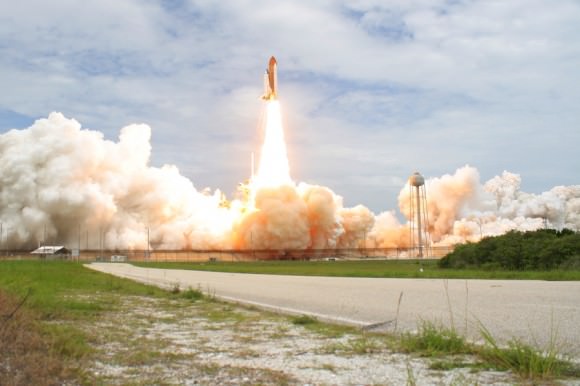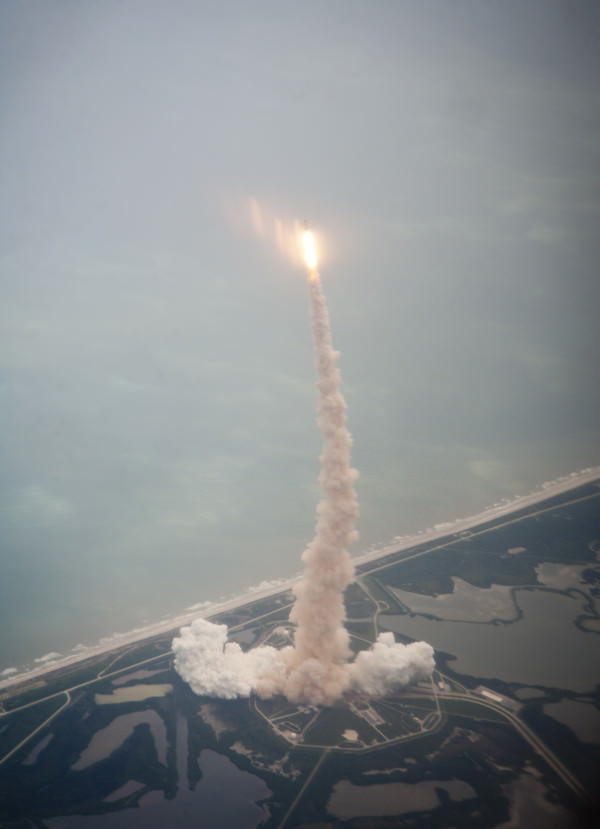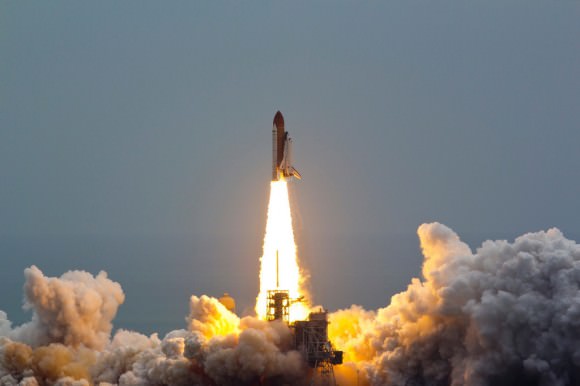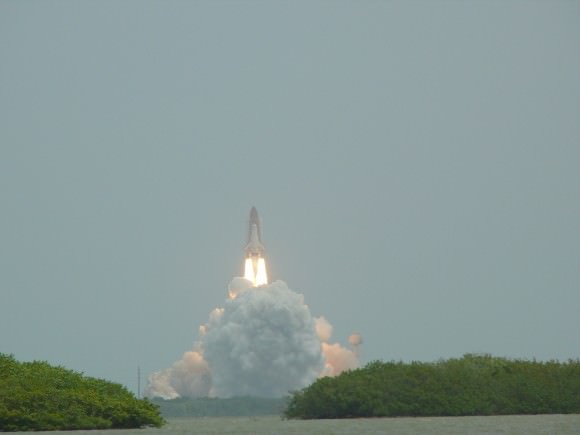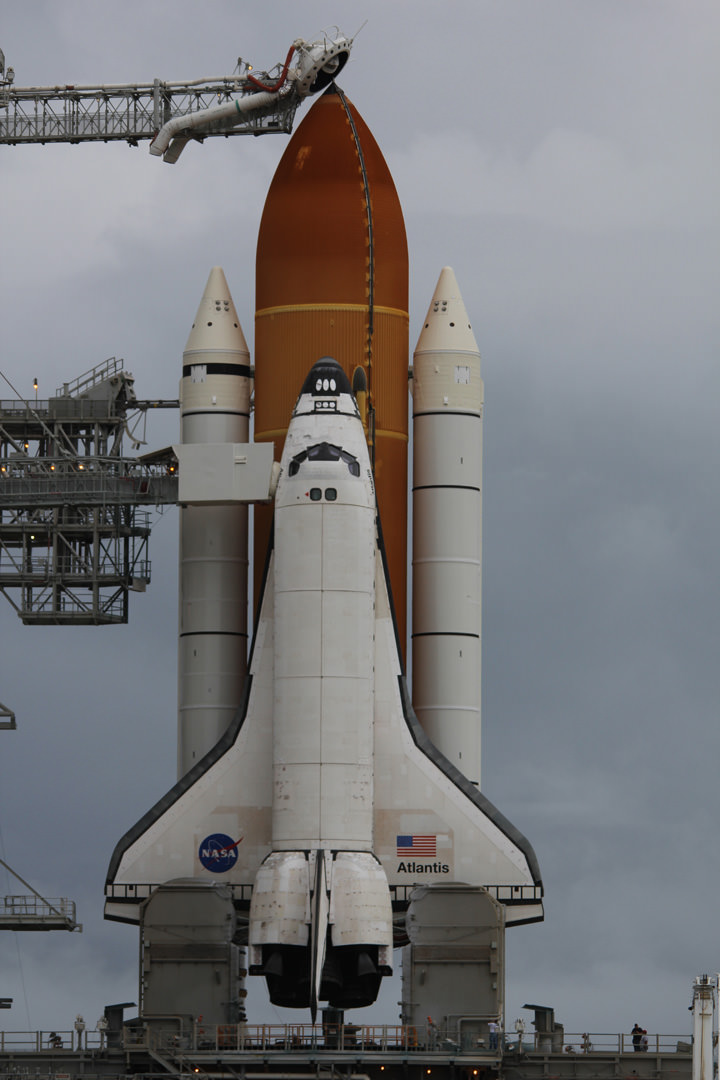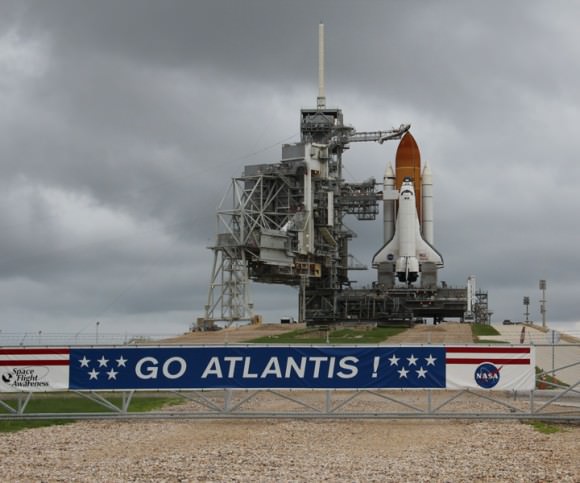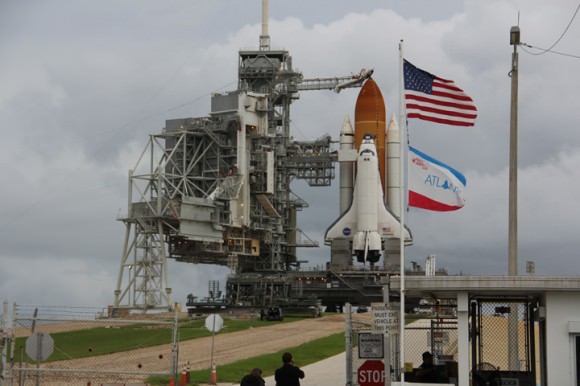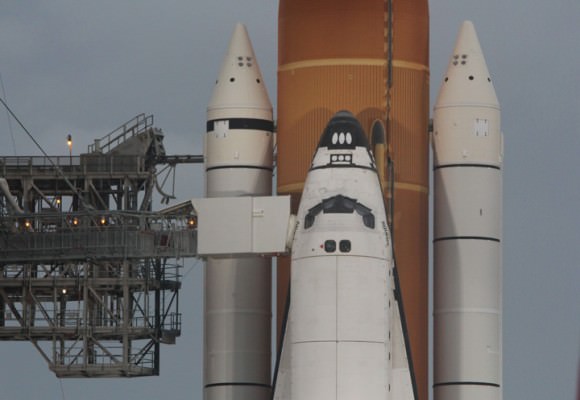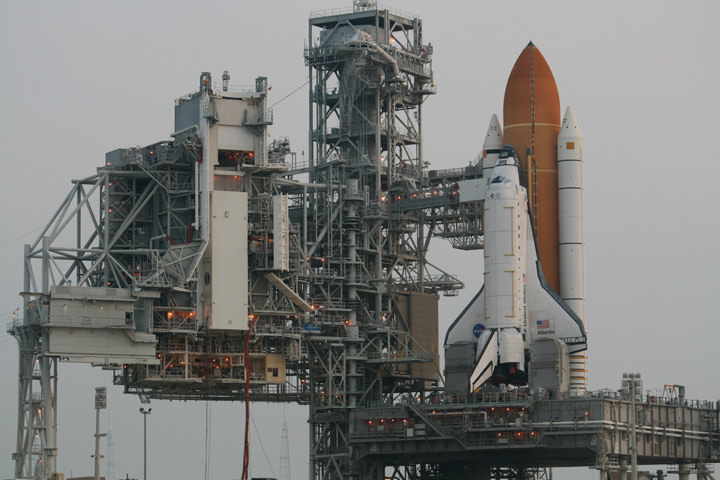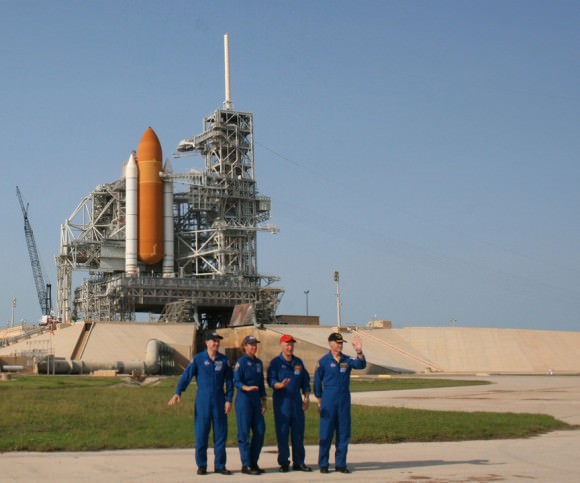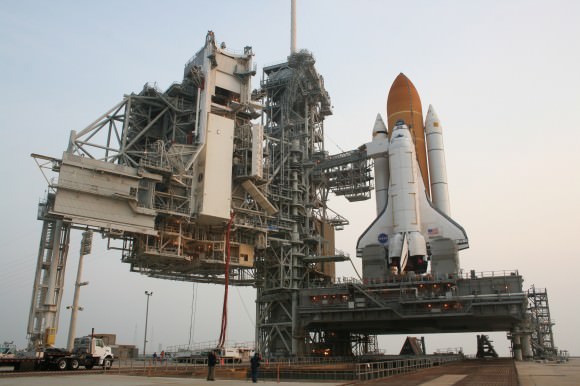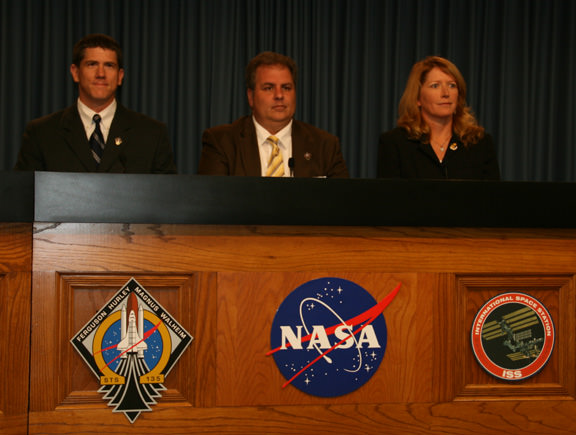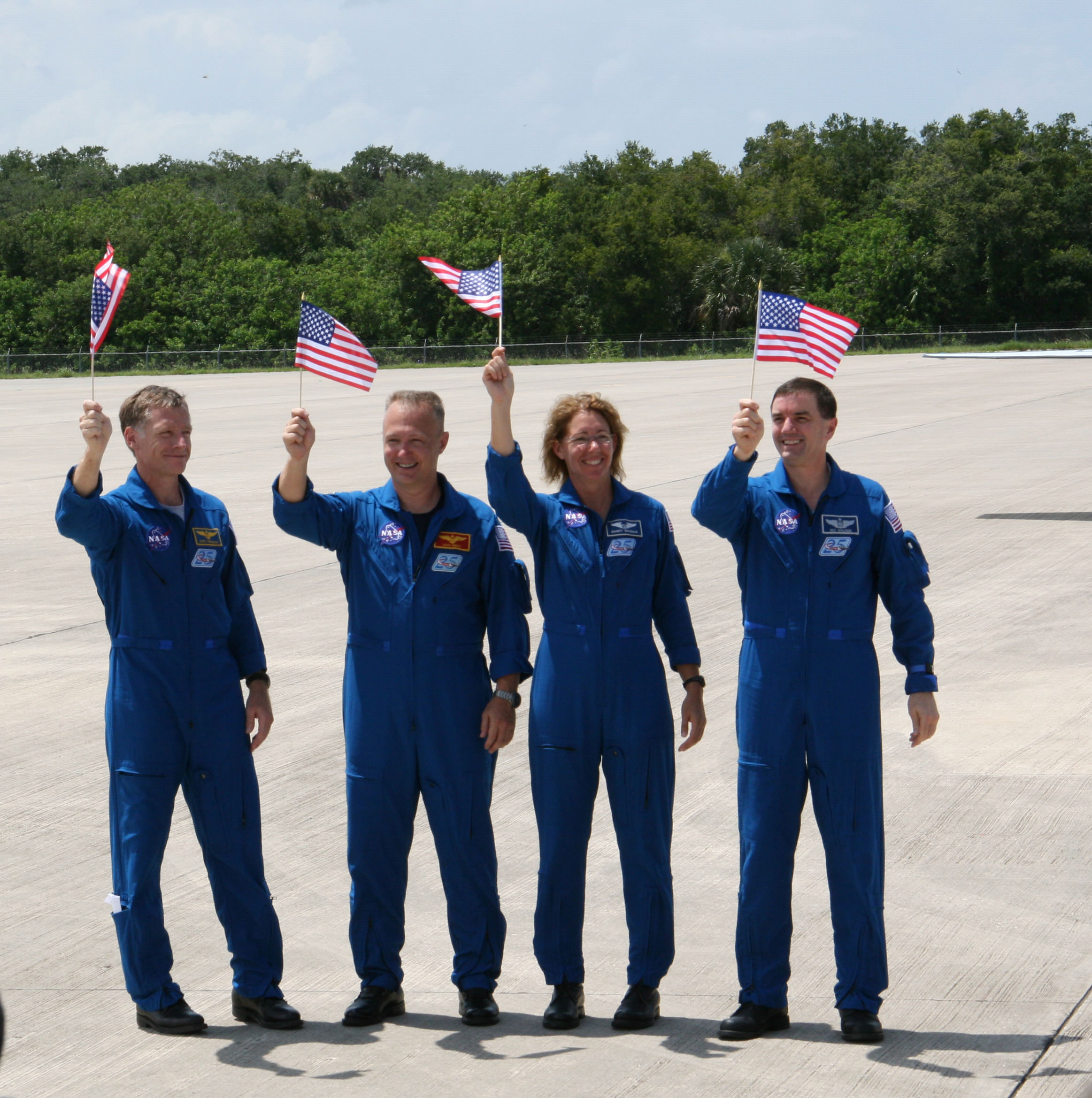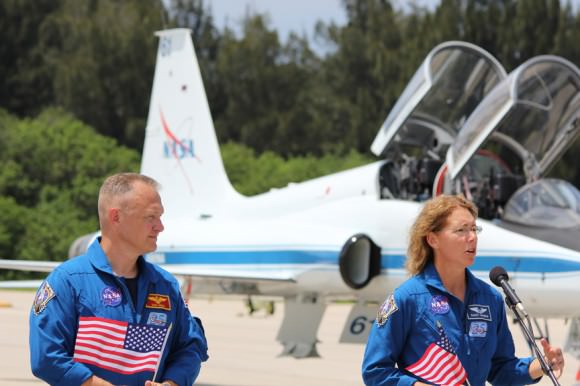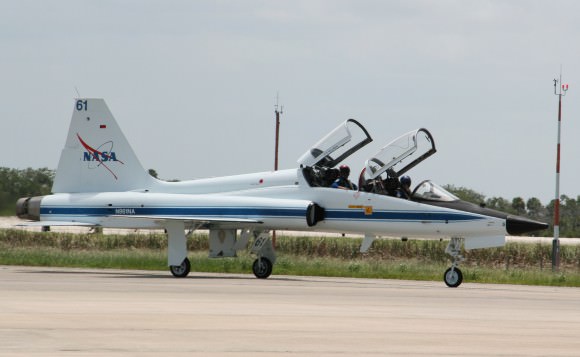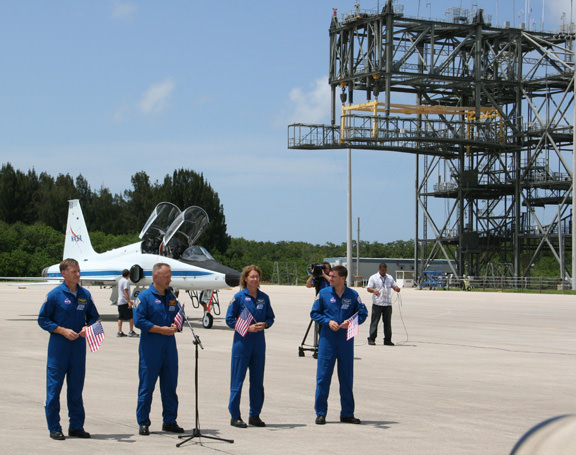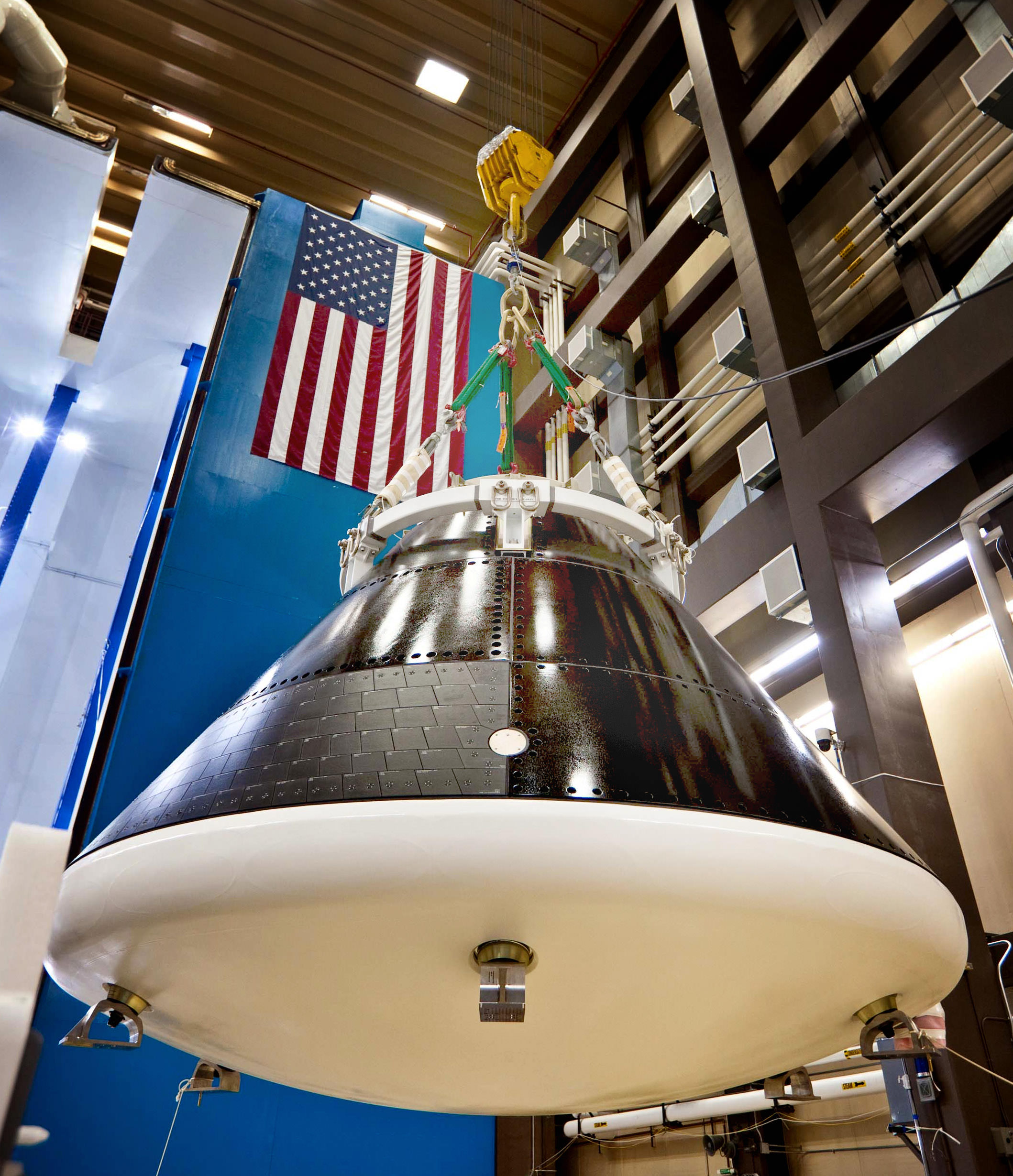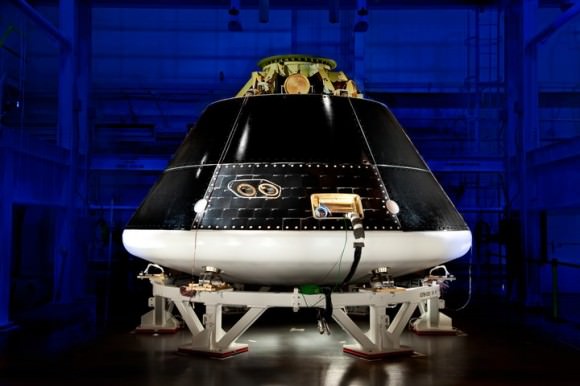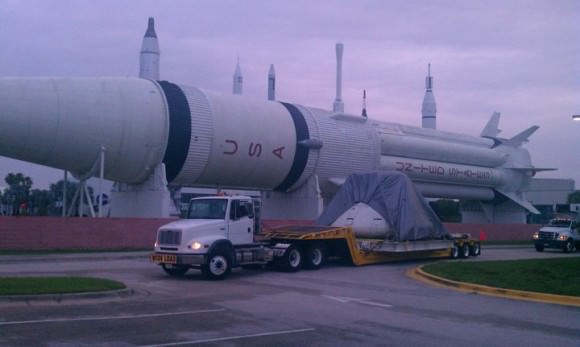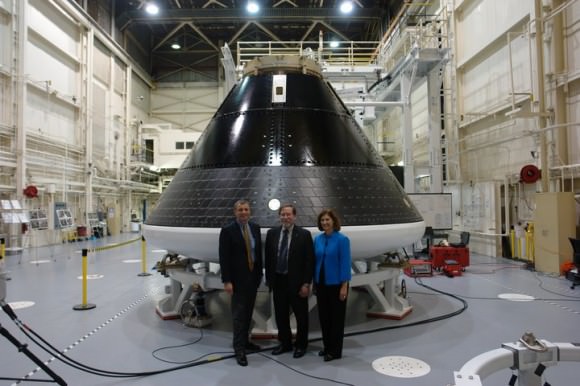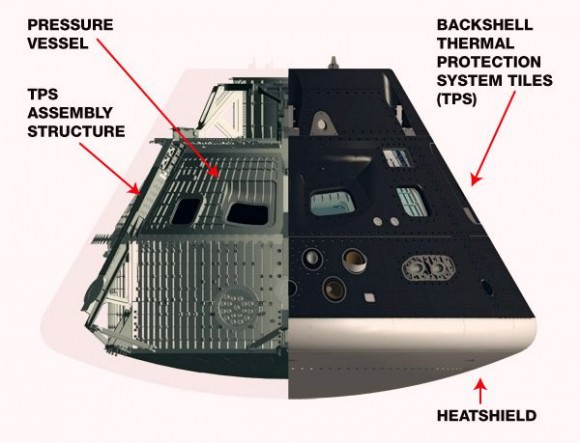[/caption]
Space Shuttle Discovery was briefly on public display on Wednesday July 13 as she emerged from the hanger at the Kennedy Space Center where she has been undergoing processing for retirement since her final landing on the STS-133 mission.
It was a rather stark and sad moment because Discovery looked almost naked and downtrodden – and there was no doubt that she would never again fly majestically to space because huge parts of the orbiter were totally absent.
Discovery was stripped bare of her three main engines and orbital maneuvering pods at the rear and she had a giant hole in the front, just behind the nose, that was covered in see through plastic sheeting that formerly housed her now missing forward thrusters. Without these essential components, Discovery cannot move 1 nanometer.
When the Space Shuttle is forcibly retired in about a week, America will have no capability to launch astronauts into space and to the International Space Station for many many years to come.
Discovery was pulled a quarter mile from the Orbiter Processing Facility (OPF) to the Vehicle Assembly Building (VAB) to make room for Space Shuttle Atlantis when she returns next week from the STS-135 mission, according to Stephanie Stilson, the flow manager for Discovery, in an interview with Universe Today.
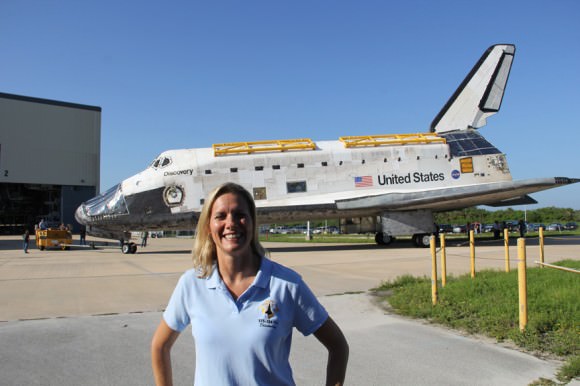
STS-135 is the 135th and final mission of NASA’s 30 year long Space Shuttle Program.
NASA now only has control of two of the three shuttle OPF’s since one OPF has been handed over to an unnamed client, Stilson said.
Stilson is leading the NASA team responsible for safing all three Space Shuttle Orbiters. “We are removing the hypergolic fuel and other toxic residues to prepare the orbiters for display in the museums where they will be permanently housed.”
“The safing work on Discovery should be complete by February 2012,” Stilson told me. “NASA plans to transport Discovery to her permanent home at the Smithsonian Air and Space Museum on April 12, 2012, which coincides with the anniversary of the first shuttle launch on April 12, 1981.”
Discovery Photo Album by Ken Kremer
